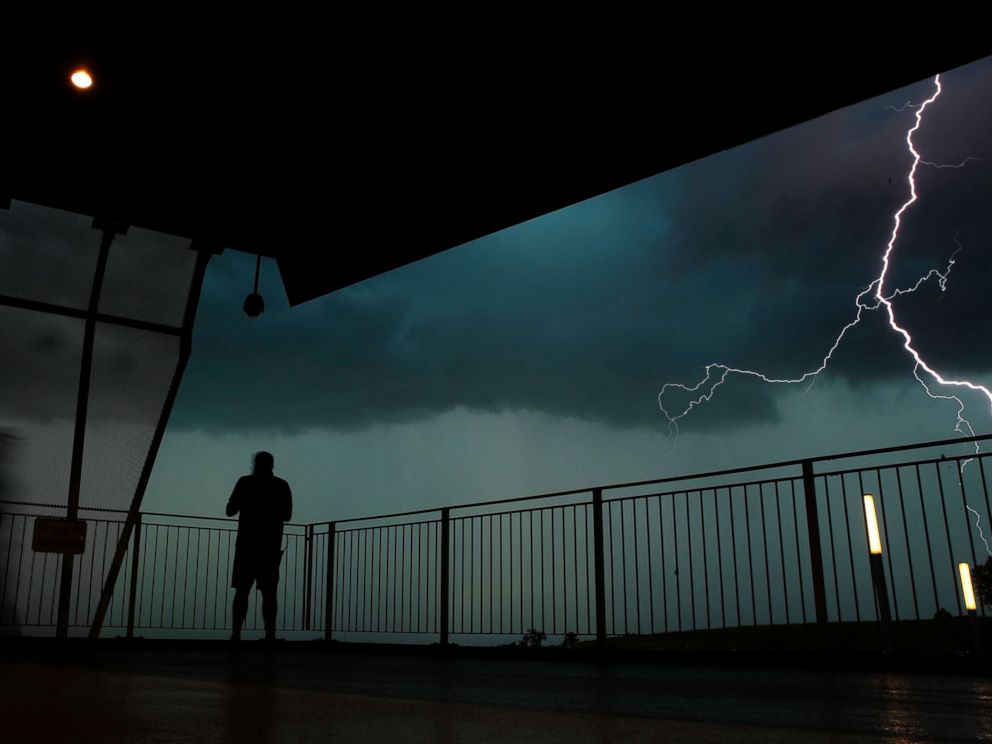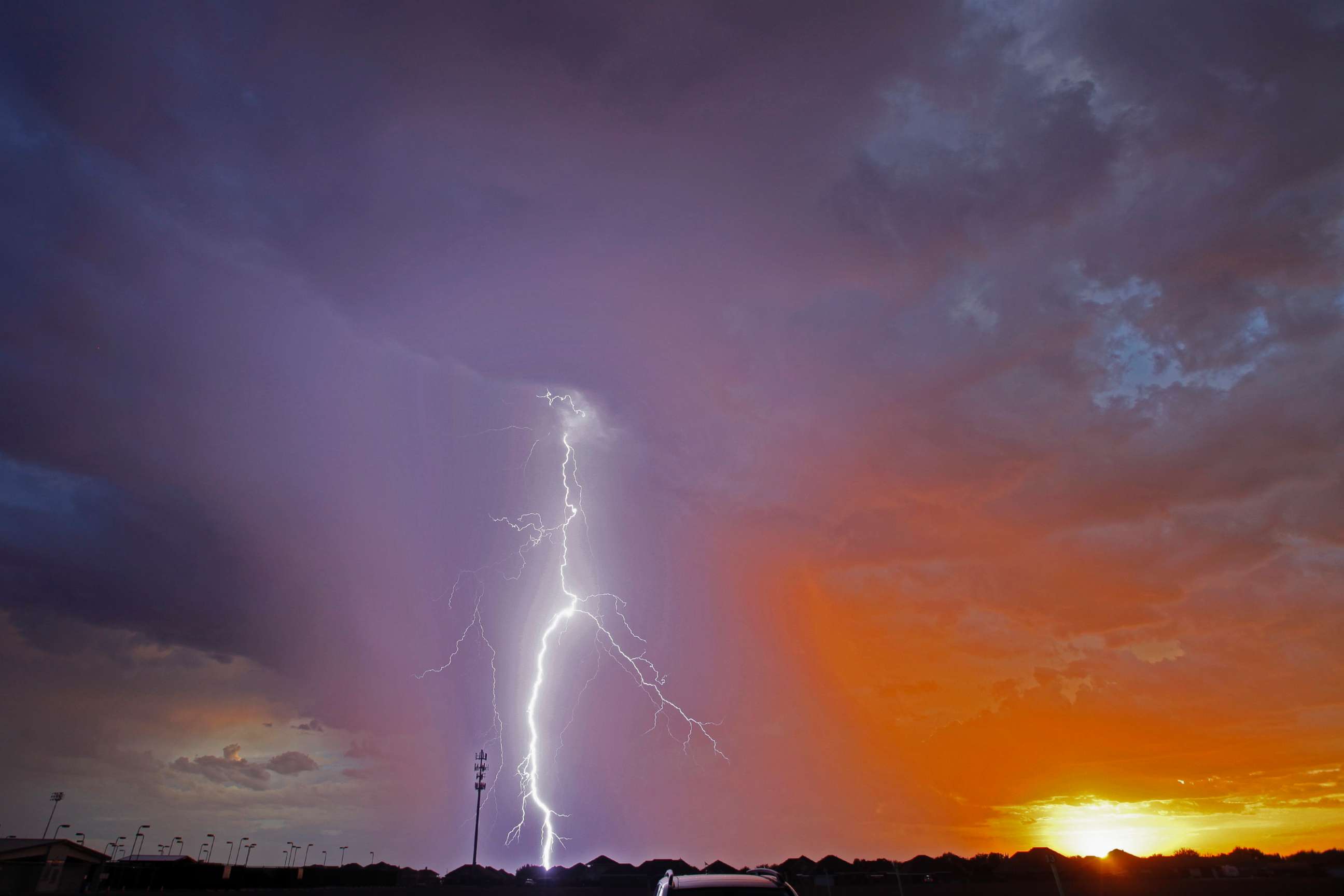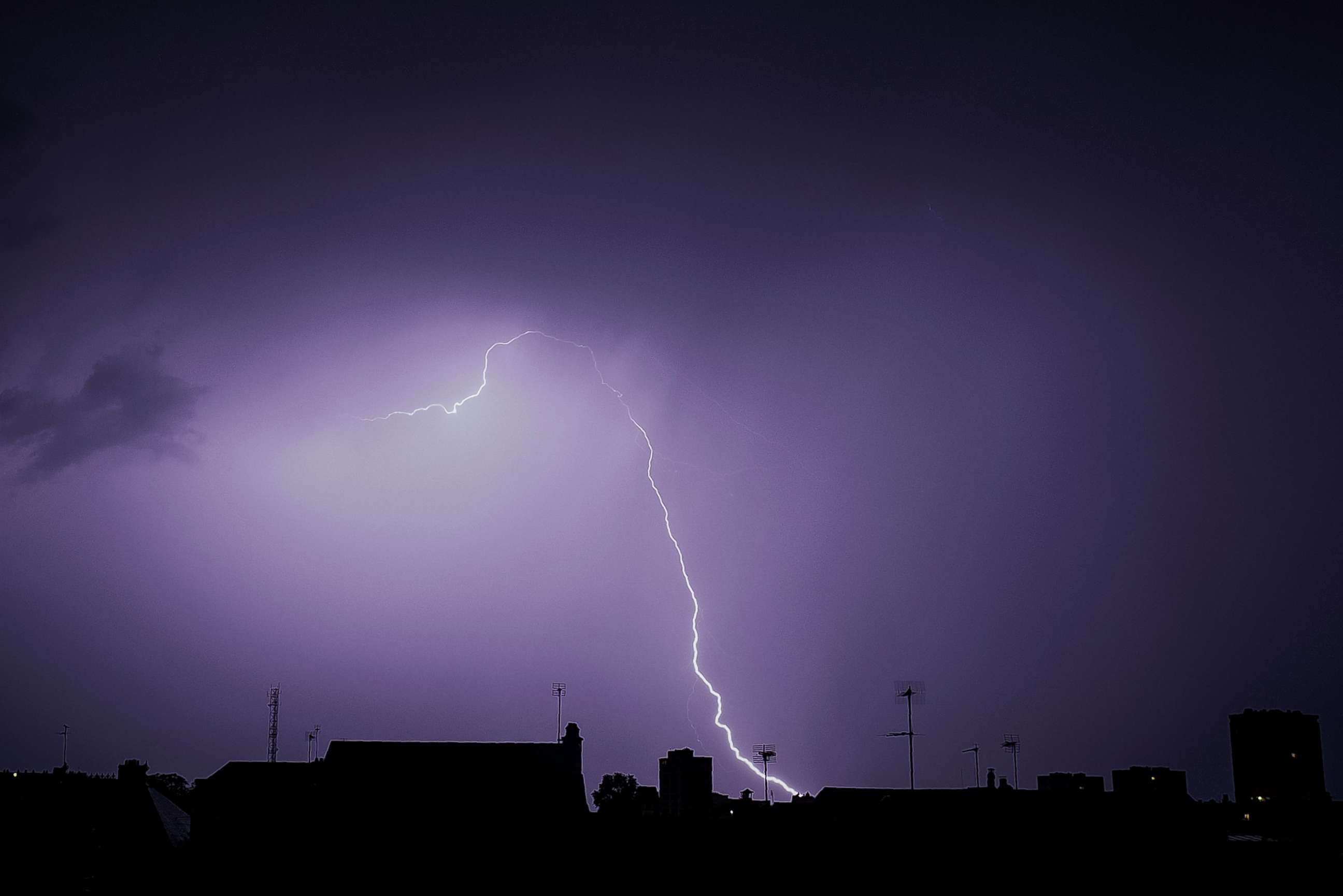Experts debunk 5 common myths about getting struck by lightning
A Florida woman was struck and killed by lightning last weekend.
A Florida woman became the 18th person in the U.S. and the seventh person in the state to die after being struck by lightning this year, according to the National Oceanic and Atmospheric Administration.
Norma Woeller, 49, was stripping the bark off a tree in her yard Saturday when a bolt struck her, ABC affiliate WCJB in Gainesville reported. She died the next day. The tree whose bark Woeller was stripping had been struck by lightning sometime last week.
Over the past decade, an average of 25 people have been killed by lightning strikes in the U.S. between Jan. 1 and September 2 each year, NOAA said. Florida averages 5 lightning deaths per year.
But many of those deaths are preventable, and experts say all that's needed is more awareness and for some common myths around lightning to be shattered. For example, they say, during a lightning storm, it's best to get away from trees as quickly as possible. Woeller was the seventh lightning fatality to be standing near or under a tree this year when she was struck.
Ahead, here are some other things you need to know.

MYTH: Very few people survive being struck by lightning.
FACT: More people survive than you would think, but some are left with life-long debilitating injuries.
Studies have found that in the United States, nine out of every 10 people struck by lightning survive.
This is partly because much of the energy of lightning strike has already dissipated by the time it reaches people's bodies, and partly because much of the current flows over the body instead of into it.
Most importantly, people survive being struck by lightning because a bystander initiates CPR. People usually don't survive a lightning strike without outside help.
“The biggest risk is just that it stops your heart,” said John Jensenius, a lightning safety specialist with the National Weather Service. "So part of the key to survival is the administration of CPR after a lightning strike."
But surviving is only part of the battle, as some people experience long-term health effects.
"Really, that's only part of the story because many people are left with lifelong debilitating injuries — from headaches and nausea to loss of memory," he added.
MYTH: You can lessen your chances of being struck by lightning by crouching down or lying flat on the ground.
FACT: Crouching or lying flat is unlikely to protect you.
This myth is understandable because it draws from a well-known fact: lightning strikes higher objects more often. The Empire State Building, for example, is struck by lightning an average of 23 times a year, according to the National Weather Service.
But here’s why going closer to the ground won’t make much of a difference: Only a small portion of all lightning strikes on humans are direct strikes, Mary Ann Cooper, a former professor of the University of Illinois and an international medical authority on lightning injuries, told ABC News.
"The vast majority of deaths are caused by ground current, where lightning hits a distance away and then travels through the ground in all directions," Cooper said. "And if you're close enough to the point it hit the ground, then you get an electric charge."
Your best bet, she said, is to head inside the nearest building.

MYTH: If you're wearing rubber-soled shoes, they will draw off the current, and if you're wearing metal objects, you'll be hit.
FACT: 'Lightning strikes where it wants to strike.'
There is no way your attire has any effect on the direction up to 2 million volts of electricity takes, Jensenius said.
"There’s kind of a myth out there that various things attract lightning or protect you," Jensenius added. "Lightning strikes where it wants to strike."
And wearing a metal bracelet doesn't mean lightning will electrocute you.
"Typically, people may have burn marks, but usually those are because lightning simply heats up the metal and that leaves burn marks," Jensenius explained.
MYTH: Once you're inside the house, you're totally safe from lightning.
FACT: Even inside the house, you need to keep away from things that conduct electricity.
Unfortunately, being inside a building isn't always enough to protect you, said Cooper.
That's because one of the ways lightning strikes people is by transmitting it through something you're holding.
“So, for instance, you're in your house, you're washing the dishes and you put your hand on the faucet," Cooper explained. "Lightning hits somewhere a distance away, travels through the water pipes and through the water and that’s how it’ll get you. Chances are, you're not getting that much energy because it’s being dissipated along the way, but you may still get this jolt. You may even get thrown across the kitchen."
Which is why, during a thunderstorm, it's a good idea to stay inside the house but away from corded phones, electrical appliances, wires, TV cables, computers, plumbing, metal doors and windows, according to the National Weather Service.

MYTH: If you touch a lightning strike victim, you could be electrocuted.
FACT: It's perfectly safe to touch a lightning strike victim as you administer first aid.
This might be the most dangerous of all the myths, said Cooper, because CPR plays a key role in helping save victims.
Most people struck by lightning require immediate medical attention because they’re likely to have suffered cardiac arrest, so it’s important for people to know that the human body does not conduct electricity.
"People do not retain an electrical charge," said Cooper. "They are safe to touch, so others should go ahead and administer CPR because that's going to save lives."
For more information on lightning strike safety, visit the National Weather's Service's website.




